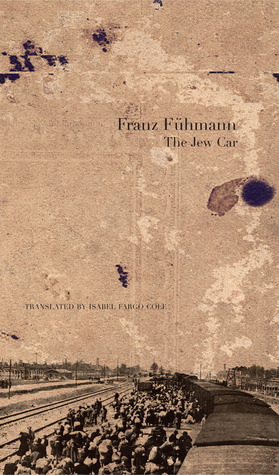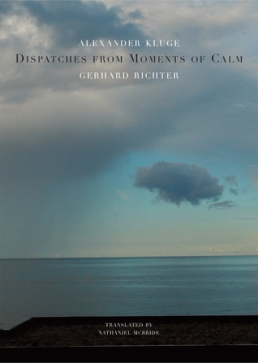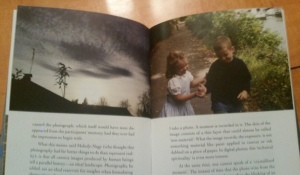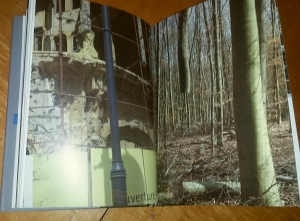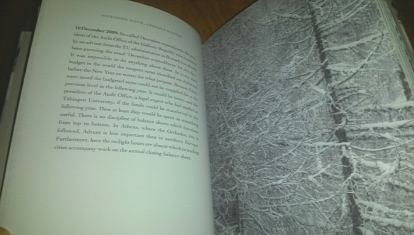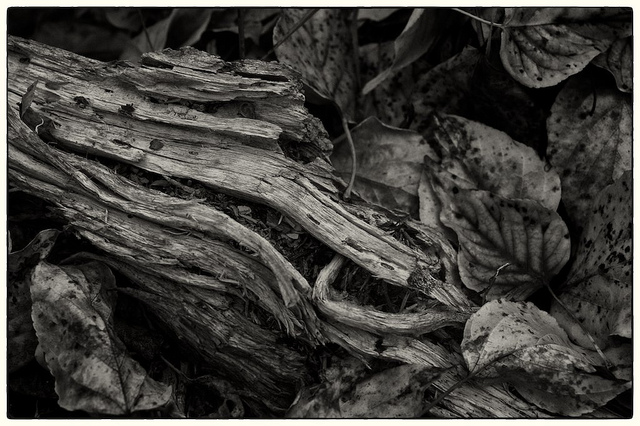On a journey the face of reality changes with the mountains and rivers, with the architecture of the buildings, the layout of the gardens, with the language, the skin colour. And yesterday’s reality burns on in the pain of parting; the day before yesterday’s is a finished episode, never to return; what happened a month ago is a dream, a past life. (“The Steppe”)
Swiss writer, photographer and journalist, Annemarie Schwarzenbach, remains, coming up on eighty years after her untimely death at the age of thirty-four, an enigma. A striking androgynous beauty, she grew up in luxury, and was dressed as a boy by her bisexual mother with whom her relationship remained complex and codependent. Yet, a certain estrangement with her family began when she befriended Thomas Mann’s children, Erika and Klaus, both of whom were homosexual and politically engaged in anti-fascist movements. They introduced her to an intellectual environment in which she could express her own attraction to women, but they also introduced her to morphine, leading to an addiction that would haunt the rest of her life. When Hitler came to power in 1933, Annemarie began to travel, frequently on her own, through the countries of the Middle East, forays that would establish her career as a photojournalist. Over the course of her lifetime she would make return trips to Persia, two trips to America, travels through the Baltic States and up to Moscow, but it is perhaps her journey in a Ford, overland from Geneva to Afghanistan in 1939, with ethnologist and filmmaker Ella Maillart, that has become synonymous with the reputation as an adventurous early LGBT icon that she has acquired since her relatively recent “rediscovery.”
Ella Maillart’s account of their trip, The Cruel Way, was published in 1947, five years after Schwarzenbach’s death from a brain injury caused by a fall from her bicycle. It is considered a classic of travel literature, but the name of her troubled and transcendent companion was changed to Christina, presumably at the intervention of Annemarie’s family. Although Schwarzenbach herself was a widely published author in her time and did manage to place some of her own Afghan-related material while the Second World War consumed journalistic attention, it was not until a curated selection of her essays and reflections on the experience was published in Germany in 2000, that her own version of their journey was given full voice. All the Roads Are Open: An Afghan Journey 1939 – 1940, published in 2011 by Seagull Books, in Isabel Fargo Cole’s lucid translation, offers a mix of automotive adventure and a lyrical, passionate account of a land and the people that enchanted her.
 Although I didn’t realize it when I started reading, All the Roads Are Open is not intended as a single cohesive piece, but as a thematic, roughly chronological assemblage of short pieces written largely as Schwarzenbach made her way by steamship back to Europe from Bombay. As such the “chapters” have a quality not seen in more typical travel writing—these are descriptive passages tied to communities, encounters, and landscapes, and the images which hold most vividly in her memory drive her account and are revisited in several pieces. Thus it is clear which experiences had a profound impact on her. At the same time, there is little about the deterioration of her relationship with Maillart, and no mention of her romantic attractions or resumed drug use (if such material exists at all as much of her work was destroyed by her mother after her death), but a kind of sadness and isolation does rest beneath the surface in some passages. As well, certain described episodes seem to be the possible product of poetic license, but none of this matters; Schwarzenbach leaves us with a memorable, exciting and insightful look at a way of life in Afghanistan that was on the verge of disappearing—in more profound ways that she could have imagined.
Although I didn’t realize it when I started reading, All the Roads Are Open is not intended as a single cohesive piece, but as a thematic, roughly chronological assemblage of short pieces written largely as Schwarzenbach made her way by steamship back to Europe from Bombay. As such the “chapters” have a quality not seen in more typical travel writing—these are descriptive passages tied to communities, encounters, and landscapes, and the images which hold most vividly in her memory drive her account and are revisited in several pieces. Thus it is clear which experiences had a profound impact on her. At the same time, there is little about the deterioration of her relationship with Maillart, and no mention of her romantic attractions or resumed drug use (if such material exists at all as much of her work was destroyed by her mother after her death), but a kind of sadness and isolation does rest beneath the surface in some passages. As well, certain described episodes seem to be the possible product of poetic license, but none of this matters; Schwarzenbach leaves us with a memorable, exciting and insightful look at a way of life in Afghanistan that was on the verge of disappearing—in more profound ways that she could have imagined.
 The journey, two women travelling alone across a rugged, lonely terrain on roads that could fade into rough tracks, was met with concern and skepticism by many. Schwarzenbach revelled in the independence and their decisions to take the more challenging routes—confident in her ability to make basic repairs on the road or, if needed, secure assistance from the rare individuals in the communities they passed through who might have any experience with cars. Her description of Mount Ararat is moving, her evocation of desolate landscapes graphic, her account of three passages over the Hindu Kush invigorating, and her remembered belief that they never had to worry where they would stay, or how they manage is admirable. She speaks regularly of the warmth and hospitality of the Afghan people, be they nomads on the plains, or leaders in towns and villages. It is, again and again, her most cherished memory. Her writing, at times punctuated with a plethora of exclamation marks, is neither idealistic nor romanticized, nor condescending. But, by contrast, she has a few choice comments for some of the British and European expats they live among in Kabul or others who display their prejudice:
The journey, two women travelling alone across a rugged, lonely terrain on roads that could fade into rough tracks, was met with concern and skepticism by many. Schwarzenbach revelled in the independence and their decisions to take the more challenging routes—confident in her ability to make basic repairs on the road or, if needed, secure assistance from the rare individuals in the communities they passed through who might have any experience with cars. Her description of Mount Ararat is moving, her evocation of desolate landscapes graphic, her account of three passages over the Hindu Kush invigorating, and her remembered belief that they never had to worry where they would stay, or how they manage is admirable. She speaks regularly of the warmth and hospitality of the Afghan people, be they nomads on the plains, or leaders in towns and villages. It is, again and again, her most cherished memory. Her writing, at times punctuated with a plethora of exclamation marks, is neither idealistic nor romanticized, nor condescending. But, by contrast, she has a few choice comments for some of the British and European expats they live among in Kabul or others who display their prejudice:
Recently, a Swiss man asked me whether the natives’ food was even edible and whether I hadn’t been afraid to sleep in these people’s midst without any protection. The good man really had no idea of Afghan hospitality! Despite the various mentions here of rich, spicy pilaf meals, it must be said that by far not all the inhabitants are able to afford rice and mutton. In the nomads’ tents, there is often nothing but sour milk and a little bread. And in many villages the poor people don’t even have that. In Turkistan, where the gardens and bazaar stalls brim with fruits in the summer, a few months later I saw the relentless winter loom. Then the same landscape was reduced to a wasteland scourged by the icy wind and cloaked in dense swaths of dust, and life in the farmers’ clay huts was quite spartan. But despite these worries, it was at this very time that laughing, waving women met me in the last village on the desert’s edge. (“Two Women Alone”)
One thing that does regularly concern Schwarzenbach, however, is the life of the girls and women in the communities they pass through. As an emancipated woman, the sight of another woman encased from head to toe in some regions is disturbing. But even in other towns and villages, a visible absence of women is noted—they are not seen. However, when invited into the inner garden of one home where their host’s wife and daughters greet them without head coverings, the travellers are able to enjoy a precious interaction afforded to them because they themselves are female. For Schwarzenbach there seems to be great satisfaction in engaging with women and, at the same time, being included with the men on hunting outings, as she is during a period when she works temporarily on an archaeological dig.
Once war is declared, the political climate in the world starts to shift, and Schwarzenbach’s restlessness grows. As the end of 1939 draws closer she prepares for another departure, anticipating climbing the Khyber Pass in her beloved Ford and passing into India, on the first stage of a journey home. But, even as the steamer pulls out of Bombay, it is evident that Afghanistan has touched her deeply. More than she anticipated, perhaps. One of the most poetic essays, placed at the end of the penultimate section of the book, is “Chehel Sotum,” in which she recalls an experience years earlier at a small palace in the Persian city of Isfahan.
The palace, whose name means “Forty Pillars”—a reference to its twenty pillars and their corresponding reflections in its pool—inspires an Afghan friend to inform her that in his homeland there are forty kinds of grapes:
Overcome by memory and homesickness, he spoke of nothing but the bewitching forty-fold profusion of the grapes of Herat and Kandahar. But though I listened to him and these words about the forty kinds of grapes lingered in my mind, tied to the vision of a promised land, at the time I did not even desire to set foot there. You cannot love what you have not embraced and seen with your own eyes; longing itself is never anything but loneliness surging and bleeding away.
Once she had herself embraced Afghanistan, she understood. One can only imagine how she would be heartbroken by the tragic condition of the country today.
All the Roads Are Open by Annemarie Schwarzenbach is translated by Isabel Fargo Cole, and published by Seagull Books.



